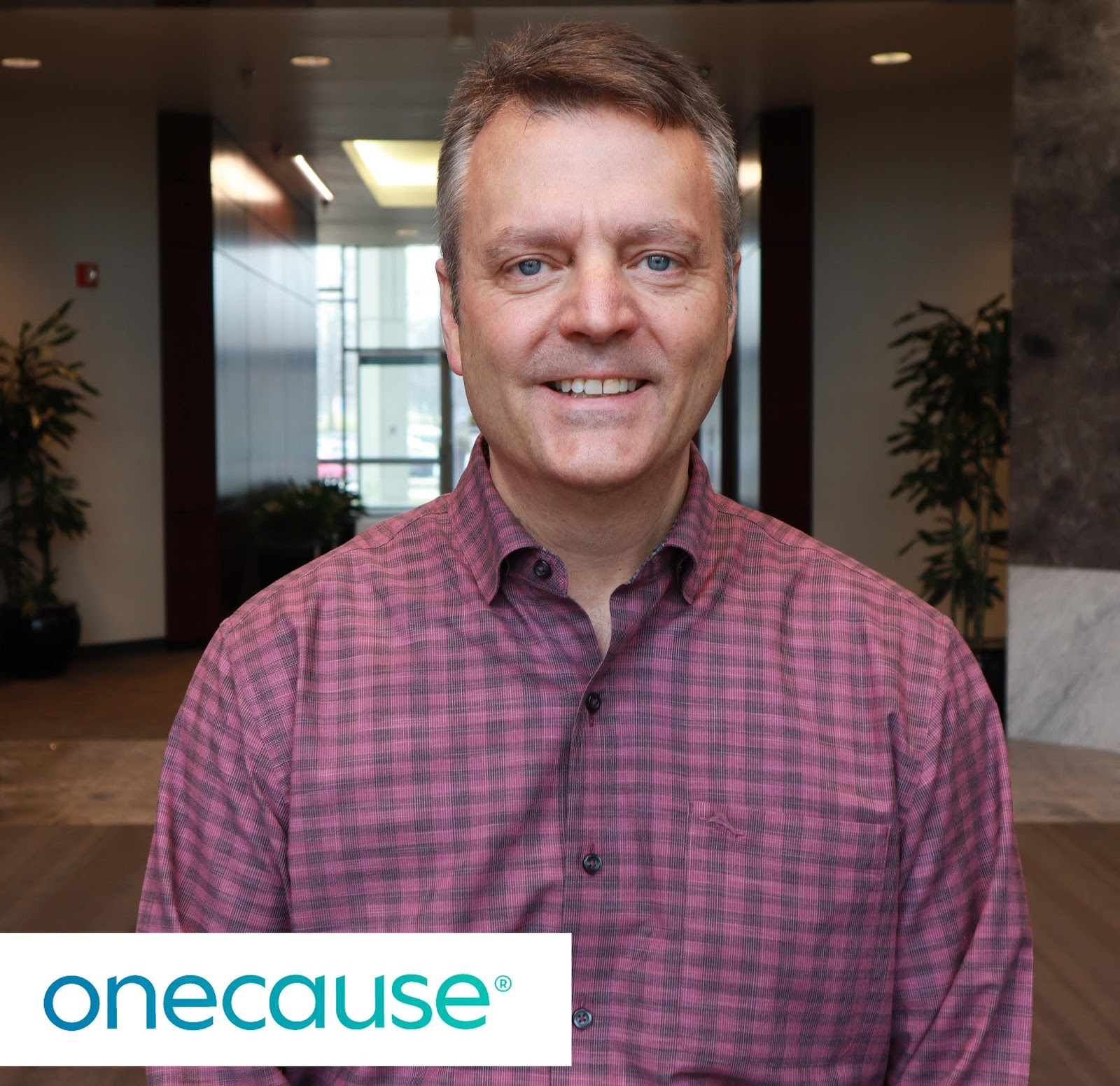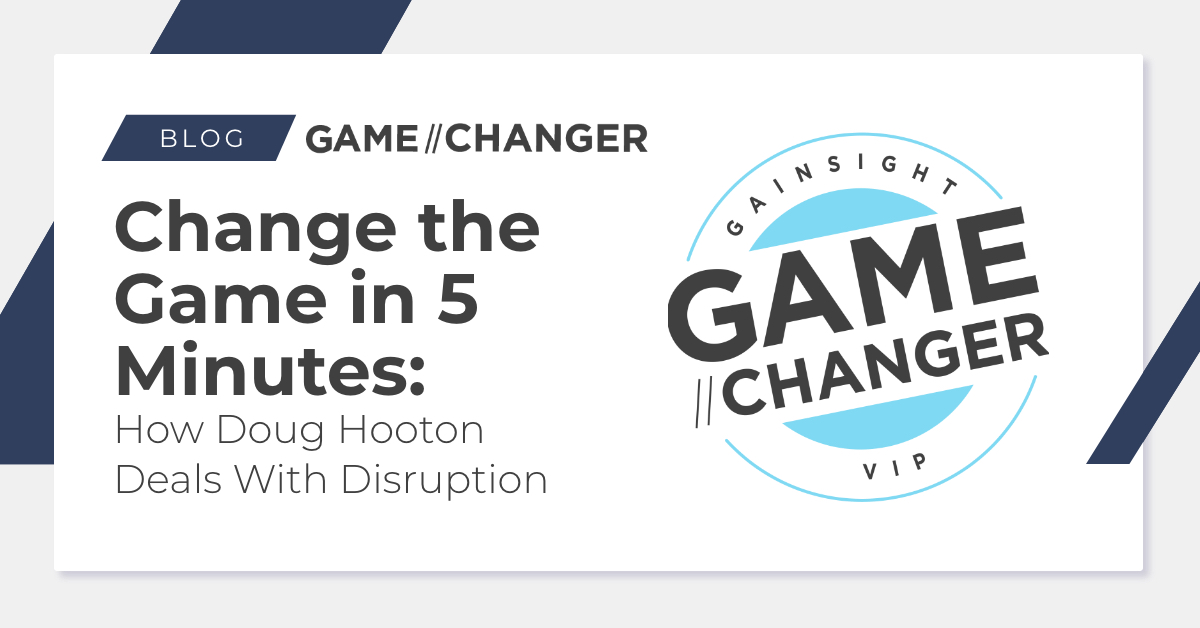
Welcome to our Change the Game in 5 minutes Series. Today, I’m chatting with Doug Hooton, Vice President of Customer Success at OneCause, a SaaS solution that helps nonprofit organizations engage donors and raise more money for their missions. There are many reasons why I want to talk with Doug, starting with the fact that he’s one of the longest-serving customer success leaders I know—he’s been doing it since long before it was called customer success! Doug has firsthand experience leading a company through a transition. OneCause, formerly BidPal, revolutionized charitable fundraising with the launch of their mobile bidding solution in 2008, helping nonprofits replace manual giving and raise more revenue through technology. More than a decade later, OneCause has gone from market pioneer to industry leader, transforming its business into a SaaS scale-up offering multiple fundraising solutions for its customers. OneCause encompasses a wide variety of fundraising solutions today, including online giving, peer-to-peer and virtual challenges, mobile bidding and auctions, and text2give donations. Doug knows what it takes to respond to industry disruption—and how to emerge better positioned for success than ever.
Nick: Doug, it’s great to be talking with you today. Before I ask you about your experiences as a customer success gamechanger, I’m wondering, when you were a kid, what was your dream job?
Doug: As a child born in the 60s who watched the moonshot, I always wanted to be an astronaut. Since I was a practical, midwestern boy, I realized that most astronauts were fighter jet pilots. So that was my first dream. At some point, perhaps after discovering Hermey the Misfit Elf in the Rudolph movie, my dream morphed into becoming a dentist.
Nick: The Air Force and the ADA’s loss is the customer success community’s gain! Doug, tell me: Why did you need to change the game?
Doug: When I came to OneCause about two years ago, the questions were simple: How are we going to retain more customers and increase their overall product utilization?
Beyond a need for additional product enhancements, there wasn’t a solid guiding philosophy for answering those questions, so the customer success team focused first on the renewal process. Like many businesses, CSMs are stretched for time and the renewals became the main points of interaction with their customers. But the customer journey needs nurturing through all phases, not just around the transactional event. The journey from the sale through renewal and beyond is never-ending.
In many ways, the CS job had become more of an “inside sales” role than a true CSM. Because of their title, the team got stuck handling a majority of their customers’ concerns and questions. Their priorities became muddled.
In parallel, the evolution of mobile technology, changing donor demographics and the rise of social fundraising created new challenges for nonprofits and increased demands on our product innovation. Product improvements started to push retention up inch by inch. That said, the increases weren’t necessarily driven by engaging with customers to understand their desired outcomes and how best to deliver value. Additionally, customers were still anchoring their fundraising with OneCause to their single event/gala, despite the value we could offer throughout the year. As a result, those retention gains plateaued for us as more competitors entered the market.
Nick: What operational changes did you make to overcome those challenges?
Doug: Leveraging my years of experience in customer success, I knew that we needed a greater focus on the customer experience. We had to make sure our customers were getting the value they expected and that we were doing everything we could to get them where they needed to be.
The company had a vision of delivering the cutting-edge technology that its customers were demanding. But we had to deliver a process that could scale for OneCause’s thousands of customers as each CSM manages hundreds of customers. So my team and I established a formalized onboarding process that includes a welcoming outreach within 24-48 hours for every customer. In the past, the initial outreach was anchored to the customer gala, which meant we weren’t getting customers quickly into the product and fostering early adoption. We were missing that initial window to start realizing customer value.
When I shared with the team that we’d be dramatically accelerating our CS engagement, their stress levels dramatically increased from their already high volume of work needed to succeed. But they knew we were committed to providing them with the tools and methodology they needed to do it.
Nick: How did Gainsight help you change the game?
Doug: I’d worked with Gainsight before, and I’d attended Pulse, too. I knew that for my team to transition from pure renewal specialists to true CSMs, they needed technology. But I also understood that tech is only one part of success. OneCause also needed to tap into Gainsight’s community and knowledge-base. The connections the team and I made at Pulse played a big part in our decision. Gainsight provided a community that we wanted to be a part of.
Nick: What did it take for you to sell the vision internally?
Doug: OneCause’s CEO, Steve Johns, had already thought progressively about the impact of customer success. And the numbers were obvious. Retention should be higher. Switching technology solutions should be more difficult. Every point of retention has a huge factorial impact on the company’s value.
At a prospect session in 2016, I went through the Customer Success Maturity Model exercise with my Gainsight Account Executive. Two weeks later, I had a customized solution proposal. This was a very positive experience and certainly factored into my feelings about what kind of partner Gainsight would be.
Nick: Fantastic! Can you tell me more about how OneCause approached the CS transformation?
Doug: OneCause made a smart decision early on: to focus on smaller, achievable goals rather than trying to do everything at once. Initially, we focused on two specific value delivery moments: the onboarding experience and the renewal experience.
For onboarding, we created CTAs around all new customers which included automated communications from either me or a senior leader, as well as a message from the CSM within 24 hours to set up a welcome call. This helped accelerate customers’ time-to-value. In the past, it could have taken several weeks based on their event date, and now they get to it in days.
Previously, we were only able to connect with the highest-touch segment for a welcome call, and the project implementation team had been handling customer onboarding based on the initial product purchased. Now the onboarding process is consistent and scalable to all customers.
Nick: Great work with onboarding. How did you change the renewal experience?
Doug: The renewal experience used to be anchored to those large, one-time events/galas. Now it’s anchored to the subscription in a true SaaS model. That allows OneCause’s CSMs to have conversations about year-round value utilizing our solution to exceed their fundraising goals. Those types of conversations would be impossible for a CSM to keep up with manually. In the past, they might happen within weeks before renewal or worse, take place after the date had passed. Now the process is executed consistently using Playbooks and CTAs. There are outreaches at 30, 60, and 90 days. Even with thousands of customers, nothing falls through the cracks.
Nick: And that threatened CSM mutiny?
Doug: There was no mutiny. The CSM team actually loved it!
Nick: Doug, after OneCause bet on customer success, did the numbers add up?
Doug: They did. Within the CS team, we’ve grown our existing business by 36% overall in 2019 alone and our net revenue retention increased to 90%. Not only that, but renewals are also happening on time. Recaptures are down now that the renewal experience is systematized and it’s because customers are renewing on time.
We couldn’t have done it without Gainsight. We got to our initial value with Gainsight fast—OneCause kicked off in late March 2018 and launched the onboarding and renewal programs by May. Given the magnitude of the changes, it was very quick. OneCause is a relatively small company, so we couldn’t spin up a new team or pause service to our nonprofit customers to implement a major system.
My advice for any company that’s ready for CS transformation? Get technology as soon as you can afford to do it. It’s step one. Because unless you have the right tools, you can’t manage or understand all the hundreds of things going on in your customer base with any consistency.
Nick: Doug, thanks for sharing so many important CS learnings with us today. And congratulations on being a true GameChanger!
